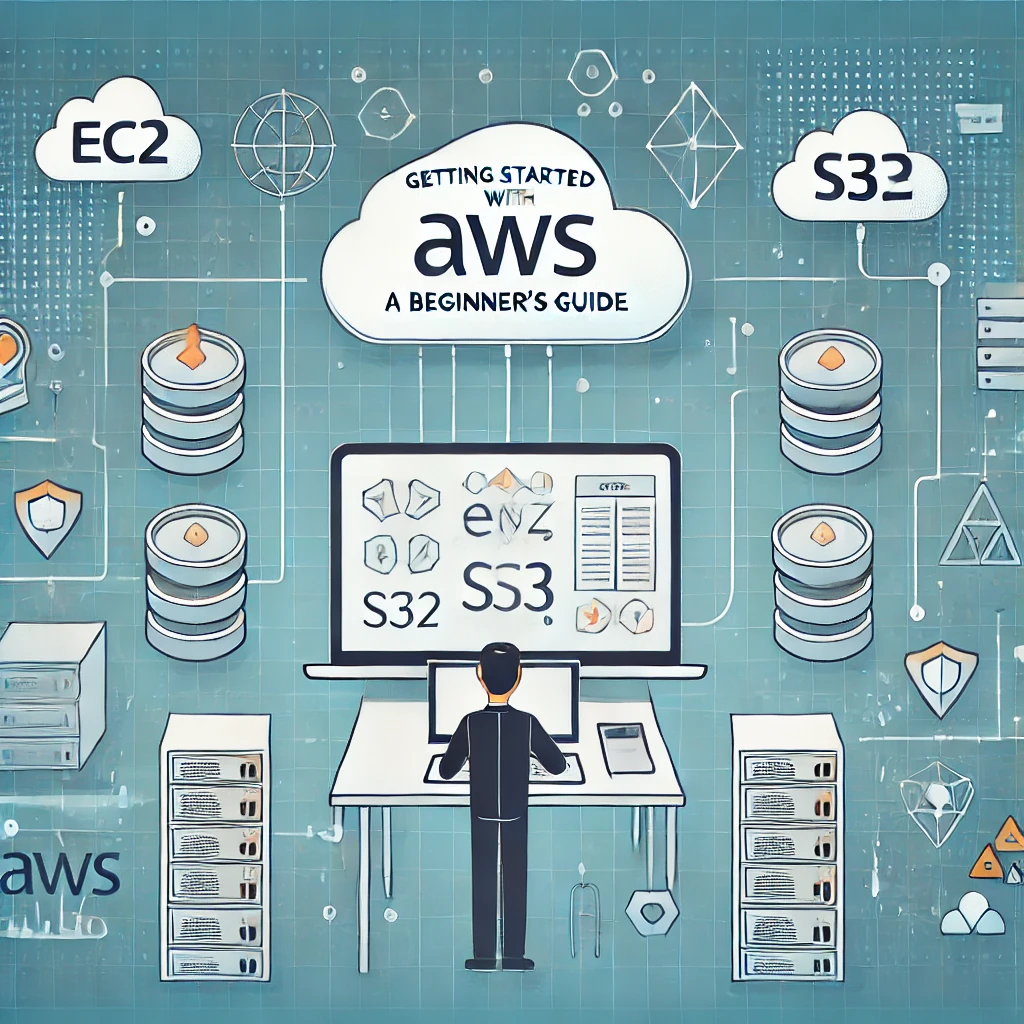Getting Started with AWS: A Beginner’s Guide

Introduction
Amazon Web Services (AWS) is a powerful cloud computing platform that offers scalable, secure, and cost-effective solutions for businesses and individuals. Whether you are a developer, IT professional, or an entrepreneur, understanding AWS cloud computing basics can help you leverage its services efficiently. This AWS beginner guide will walk you through AWS cloud infrastructure, essential services, and step-by-step instructions to get started.
What is AWS?
AWS (Amazon Web Services) is a leading cloud service provider that offers a wide range of solutions, including computing power, storage, databases, networking, and machine learning. With its pay-as-you-go pricing model, AWS is suitable for startups, enterprises, and individuals who want to build applications in the cloud.
Why Use AWS?
- Scalability: AWS allows you to scale resources up or down based on demand.
- Cost-Efficiency: The AWS free tier tutorial helps beginners explore services without incurring costs.
- Security: AWS provides robust security features and compliance standards.
- Reliability: Global data centers ensure high availability and minimal downtime.
- Flexibility: Supports various programming languages and frameworks.
AWS Free Tier: How to Get Started
AWS offers a Free Tier to help beginners explore its services without incurring charges. To begin:
- Create an AWS Account: Visit AWS and sign up.
- Verify Your Identity: Enter billing details (you won’t be charged unless you exceed free-tier limits).
- Access AWS Console: The AWS console walkthrough will guide you through available services.
- Start Using Free Tier Services: Try AWS Lambda, EC2, S3, and RDS.
Best AWS Services for Beginners
Here are some essential AWS services explained for beginners:
- Amazon EC2 (Elastic Compute Cloud): Virtual servers for running applications.
- Amazon S3 (Simple Storage Service): Secure, scalable cloud storage.
- AWS Lambda: Serverless computing to run code without managing servers.
- Amazon RDS (Relational Database Service): Managed databases like MySQL and PostgreSQL.
- AWS IAM (Identity and Access Management): Secure access control for AWS resources.
AWS Step-by-Step Setup for Small Businesses
- Set Up Billing Alerts: Monitor your cloud expenses.
- Create IAM Users: Avoid using root accounts; assign permissions wisely.
- Launch an EC2 Instance: Choose an OS, configure security groups, and deploy applications.
- Configure S3 Buckets: Store and retrieve data with ease.
- Enable CloudWatch Monitoring: Track performance and security metrics.
AWS Pricing and Cost Management for Beginners
- Pay-as-you-go Model: Only pay for what you use.
- Cost Explorer: Analyze your spending patterns.
- AWS Budgets: Set limits to prevent unexpected charges.
- Free Tier Usage Monitoring: Keep track of free-tier limits to avoid charges.
AWS Certification for Beginners
If you want to validate your AWS knowledge, consider obtaining an AWS certification for beginners, such as:
- AWS Certified Cloud Practitioner: Ideal for those new to cloud computing.
- AWS Solutions Architect Associate: For individuals with some cloud experience.
AWS Deployment Guide
Deploying applications on AWS can be done using various methods:
- AWS Elastic Beanstalk: Simplifies application deployment.
- Amazon Lightsail: Easy-to-use cloud platform for hosting applications.
- AWS CLI & SDKs: Automate deployments using command-line tools.
FAQs
- How to start using AWS cloud services? To get started, create an AWS account, explore the AWS console, and use Free Tier services to learn the basics.
- What is the best AWS service for beginners? Amazon EC2, S3, and AWS Lambda are among the best AWS services for beginners.
- Is AWS free for beginners? Yes, AWS offers a Free Tier that includes limited free usage of various services for 12 months.
- Can non-technical users learn AWS? Yes, AWS provides beginner-friendly guides, tutorials, and certifications tailored for non-technical users.
- How can I monitor AWS costs? Use AWS Cost Explorer, Budgets, and Billing Dashboard to track and manage your expenses.
Conclusion
AWS is a powerful cloud platform that offers a wide range of services suitable for beginners and professionals. This AWS getting started tutorial covered the basics, including AWS cloud computing, key services, pricing, and step-by-step setup. Whether you’re a developer, a business owner, or an aspiring cloud engineer, learning AWS step by step will help you unlock the full potential of cloud computing.